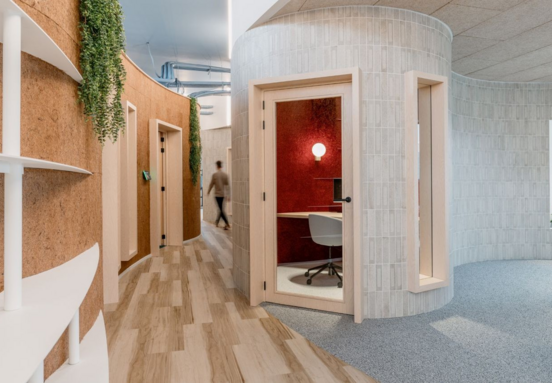In today's fast-paced business world, distractions are more prevalent than ever. From constant notifications to the allure of multitasking, maintaining focus has become a significant challenge for teams across all industries. This impacts not just individual productivity but also overall business efficiency and success. For businesses seeking to optimize their operations and maximize the potential of their office or warehouse space, understanding and combating these distractions is paramount. This article delves into why multitasking often harms more than it helps and provides expert strategies to cultivate a more focused and productive work environment.
The hidden cost of constant distractions
Most active professionals recognize the scenario: a critical report is due, yet every few minutes, a team message pops up, an email arrives, or a smartphone buzzes. These constant interruptions severely test our ability to concentrate. Research from the United States reveals that the mere presence of a smartphone can diminish a person's available cognitive capacity, even if the device is off or unused. Modern technology is designed to capture our attention, and we often willingly succumb to its pull.
Neuroscientist Henning Beck points out that "nine times out of ten, the distraction comes from us – we want to be distracted." It's a natural human tendency; distractions offer the brain a chance to process recently assimilated information. However, uncontrolled distractions without a time limit make it difficult to re-engage with work effectively.
The myth of multitasking: an enemy, not a friend
Imagine juggling multiple tasks simultaneously: a text search running, updating a meeting calendar, and trying to finalize a presentation. This kind of simultaneity goes against the very nature of human thought, explains Henning Beck. "A brain doesn't think with parallel open windows, but in blocks," he states.
Attempting to handle several professional tasks at once reduces our capacity for concentration. This leads to diminished quality of work, increased errors, and ultimately, a longer time to complete tasks than if they were tackled sequentially. Your office layout should support focused work, perhaps through dedicated quiet zones or well-defined individual workspaces.
Expert strategies for enhanced focus and productivity
Banish your smartphone from the workspace
One of the most impactful steps your team can take is to remove smartphones from the immediate workspace. "Put your smartphone out of sight if you want to concentrate," advises time management coach Cordula Nussbaum. "It's proven to lead to better productivity. You then work faster and with fewer errors." Ideally, phones shouldn't even leave pockets in the morning at the office. Chat programs and social media actively engage our reward system, creating a strong urge to check and a fear of missing out. Strategically placed lockers or dedicated phone-free zones in your office or warehouse can support this.
Embrace intentional breaks
Contrary to popular belief, skipping breaks to get ahead is counterproductive. "Studies show that skipping lunch breaks decreases our performance," explains Nussbaum, "ultimately costing us up to an hour and a half." Planned breaks are crucial for the brain. Henning Beck recommends a general rule: "One break for five parts of work." These breaks allow the brain to digest and reset, acting as the "best investment in our concentration." Ensure your office space includes comfortable, dedicated break areas to encourage employees to fully disengage during these vital recovery periods.
Structure your work and single-task
Instead of multitasking, clearly structure your work and maintain a single objective. Henning Beck advises: "You need to clearly state what the task is, why you are doing it." Then, tackle all tasks leading to the goal one by one. It's helpful to mark a clear end point after completing a task. "For example, stand up and walk around the office five times," suggests Cordula Nussbaum. Designing workspaces that allow for this sequential focus, perhaps with individual desks or cubicles, can be highly beneficial.
Manage digital availability
The expectation of being constantly available, both professionally and privately, makes us vulnerable to distractions. Henning Beck emphasizes separating activities by time. "Schedule two phases during the day to process your emails – for example, in the morning and evening – if possible," he recommends. This strategy reduces the constant pull of your inbox and allows for uninterrupted work periods.
Leadership's role in fostering focus
Targeted reduction of availability requires buy-in and clear communication from management. Cordula Nussbaum stresses that "team leadership should clearly formulate how quickly emails really need to be answered and, in the best case, agree on concentration periods during which employees have the opportunity to completely disconnect in order to work longer on a demanding task without being disturbed." For instance, designating mornings for focused work and afternoons for communication can dramatically improve team efficiency within your chosen office layout.
Train your concentration muscles
The ability to stay focused for longer periods can be trained. Henning Beck suggests starting with shorter phases. "For example, you decide to work on a task for 20 minutes without being distracted, then take a break," he recommends. "This is simpler and more achievable than trying to work concentrated for the entire morning." Once 20 minutes becomes easy, extend the focus window to 40 minutes. Even very short exercises, like counting backwards from 30 to 0, can help you practice maintaining focus.
Conclusion
By implementing these expert-backed strategies, businesses can significantly reduce workplace distractions, enhance concentration, and boost overall productivity. A well-considered office or warehouse space, designed to support these practices – from dedicated quiet zones and break areas to clear communication protocols – is an invaluable asset in fostering a culture of deep work and efficiency. Invest in smart strategies and an optimal environment, and watch your business thrive.
Source: virgule.lu







